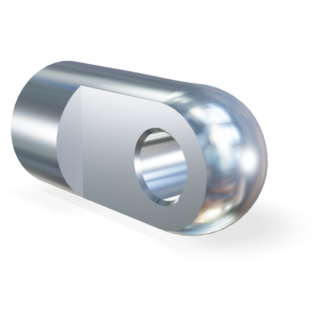The cylinder of a gas spring (the ‘thick’ part of the gas spring) is filled with nitrogen gas. The nitrogen gas is forced in under high pressure. The higher this pressure, the greater the force with which the piston rod (the ‘thin’ part of the gas spring) wants to slide out of the cylinder. In order to ensure that no nitrogen gas escapes, while the piston rod retracts and extends, the piston rod slides through a seal which encloses the piston rod tightly at the end of the cylinder. As well as the nitrogen gas there is also a small amount of oil in the cylinder. The oil provides extra cushioning as the piston rod reaches its outermost position (fully extended). The oil has an additional purpose, which is to seal and lubricate, so that the piston rod can slide in and out with less friction.
The position of the gas spring can vary dramatically from when a lid (cover) is open to when its closed. With the boot (tailgate) of the car the position of the mounted gas spring entirely reverses. Therefore, when placing a gas strut, we need to ensure that the amount of oil that is in the cylinder, will automatically flow to the seal in the whatever situation it finds itself, with the lid (cover) open or closed.


